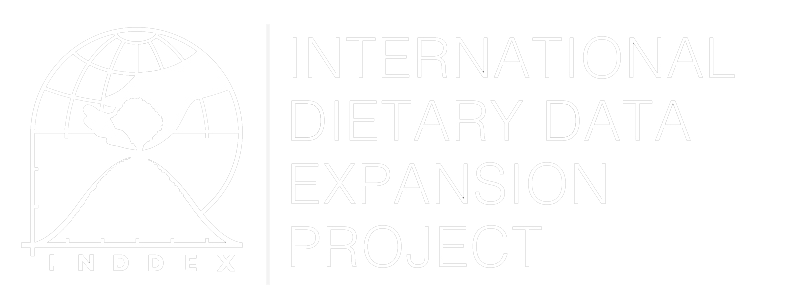Total Individual Micronutrient Intake mg/day or ug/day
Overview
Total individual micronutrient intake is in the class of indicators that measures individual intake of a single nutrient (e.g. vitamin A, thiamin, riboflavin, niacin, vitamin B6, folates, vitamin B12, vitamin C, calcium, iron, zinc). It quantifies the daily intake of individual micronutrients, and can also be paired with further data in order to calculate insufficient micronutrient intake or prevalence of (adequacy or) inadequacy.
Measuring micronutrient intake is important because malnutrition due to micronutrient deficiency continues to be a widespread problem in low-income countries. Micronutrients, especially iron, iodine, vitamin A, and zinc, are essential to ensure proper growth and development for infants and children and work productivity, healthy pregnancies, and overall cognitive and physical health of adults (Muller & Krawinkel, 2005). Some of the other indicators that measure individual intake include Nutrient Adequacy Ratio (NAR) and
Mean Adequacy Ratio (MAR), probability of inadequacy of specific micronutrient intake, Mean Probability of Adequacy (MPA) across several micronutrients, total individual macronutrient intake, and total individual energy intake. For more discussion on the comparative uses of these indicators, refer to the 'Uses' section below.
Method of Construction
To estimate individual daily intake of micronutrients, data from a 24-hour Dietary Recall method, a Weighed Food Record, or a Food Frequency Questionnaire (FFQ) are required.
Population mean consumption can be estimated with a single survey but the survey must be repeated on at least a subsample of the survey population for two non-consecutive days of intake to estimate 'usual intake'. The number of days of intake per subject that must be collected depends on the micronutrient of interest (Institute of Medicine [IOM], 2000). The final sample should be representative of all days of the week. Enumerators must ensure individuals report not just food consumed, but also any supplements taken and if any of the foods were potentially fortified. Using the weight of foods consumed and a Food Composition Table (FCT), the amount of each micronutrient of interest contained in the reported foods is calculated. If information is available in the FCT, phytates and other factors that inhibit the absorption of key nutrients such as iron and zinc should be taken into consideration.
For more information on how this indicator is constructed, see Chapter 2 entitled 'Overview of the WHO Intake Monitoring, Assessment and Planning Program (IMAPP)' of the following World Health Organization (WHO) report (WHO, 2009). If this indicator will be used to calculate inadequacy or deficiencies, intake can then be compared to the distribution of Estimate Average Requirements (EARs) or Recommended Daily Allowances (RDAs) of specific micronutrients, which depend on the individual's age and sex (for more information, see Murphy & Poos [2002]).
Uses
Individual micronutrient intake can be a useful indicator in assessing the need for, or impact of nutrient-specific interventions including fortification and supplementation, which may be desirable in given locations or with specific population subgroups, such as pregnant and lactating women. Additionally, if micronutrient intake data are available for all members of a household, this indicator could shed light on the dynamics of intra-household allocation of food. However, this indicator alone cannot be used to assess the adequacy of intake, and indicators that incorporate age and sex-specific nutrient requirements, such as MAR or probability of (in)adequate intake, may be more appropriate. Additionally, indicators such as total intake of macronutrients or total individual energy intake may need to be used in conjunction with this one to provide a fuller picture of the components of a healthy diet.
Strengths and Weaknesses
One strength of this indicator is that it allows researchers to estimate an individual's intake of specific micronutrients and pair findings with individual demographic information, such as religion, age, sex, education, or any other characteristics of interest (Cowan et al., 2019). However, this indicator does not speak to the adequacy of the diet as a whole, to dietary patterns, or the ability of individuals to absorb and use the micronutrients.
Data Source
Intake data can be obtained from individual 24-hour Dietary Recall surveys, Weighed Food Records, or FFQ. The Food and Agriculture Organization and WHO's Global Individual Food Consumption Data Tool (FAO/WHO GIFT) is a source for individual-level quantitative dietary data. The FAO/WHO GIFT aims to make publicly available existing quantitative individual food consumption data from countries all over the world. National or regional Food Composition Tables should be used to identify the nutrient contents of the foods and can be found at FAO's International Network of Food Data Systems (INFOODS) or the Agricultural and Food Systems Initiative World Nutrient Databases for Dietary Studies (WNDDS).
Links to Validation Studies
Links to Illustrative Analyses
- Farhat et al. (2019). Inadequacies of micronutrient intake in normal weight and overweight young adults aged 18-25 years: A cross-sectional study. Public Health.
- Nunn et al. (2019). Dietary micronutrient intakes among women of reproductive age in Mumbai slums. European Journal of Clinical Nutrition.
- Daniels et al. (2019). Micronutrient intakes of lactating mothers and their association with breast milk concentrations and micronutrient adequacy of exclusively breastfed Indonesian infants. The American Journal of Clinical Nutrition.
